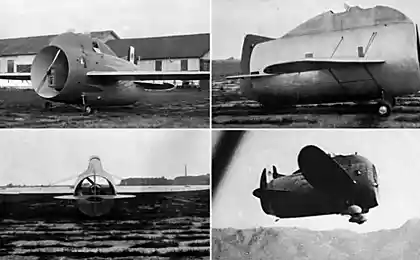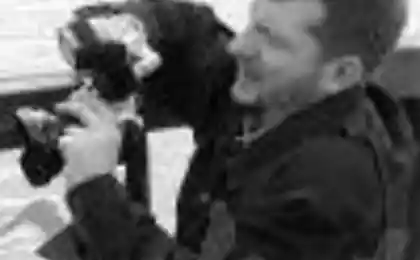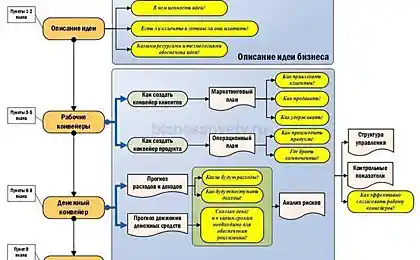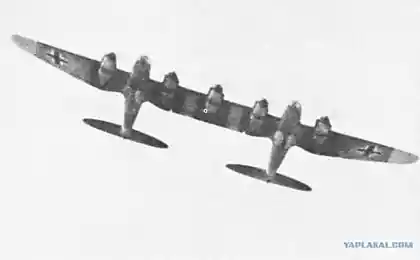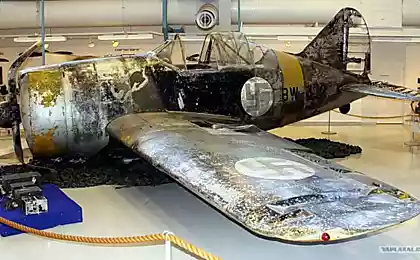1697
Excitement around the project C-37

In the late nineties and early two-thousand years, "the highlight of the" Russian airshows became the new C-37 "Berkut", later a new index of the Su-47. The unusual appearance of the aircraft, coupled with the use of forward-swept wing (CBS), drew the attention of all the people involved with aviation or just interested in her. Excitement around the project C-37, often called the principal reliable domestic military aviation, did not concede a later argument and debate current program PAK FA. Professionals and aviation enthusiasts predicted the development of the company "Sukhoi" great future and trying to predict how effective it will be in the army. However, since the first flight of the Su-47 has been more than 15 years, and the air force Russia and did not get a serial fighters based on this project. Only after several years of heated discussions in the public mind to the understanding of the fact that C-37 was purely experimental and from the outset was not considered as a basis for drill equipment near future. Nevertheless, a number of nuances of the "Golden Eagle" remains a secret until now, which sometimes leads to renewed disputes.

The first prototype of the aircraft C-37 flew on 25 September 1997. However, the existence of a secret project was previously known. Back in 1994-95, foreign aviation press wrote about the development of a long-term Russian fighter. Western journalists brought the alleged name of development - C-32. In addition, in some publications speculated about interesting technical features of the project. According to the drive information, the new C-32 was to have swept wing.

As it turned out, the foreign aviation journalists were partially right. Confirm their assumptions have appeared in early 1996. Then publication "Journal of Air Force" has published photos from the meeting of the Military Council of the Air Force. It addition to the representatives of the aviation industry and air forces were present two small model airplanes. In one of them quickly identified the already known Su-27M, and the second caused a lot of questions. Layout black with white numerals "32" on board had canards and - most importantly - the characteristic swept wing. A few months after the publication in the foreign press appeared schemes and drawings made on the basis of the available photos.
Thus it is impossible not to note the official reaction of the company "Sukhoi". All questions about the project fighter with CBS representatives Design Bureau responded the same way: no work in this direction is underway. As it turned out, the answers are more like excuses were due secrecy regime. As for the classified work, then they started back in the early eighties.

In the late seventies and early eighties, the Air Force leadership, together with the State Committee on Aviation Technology under the USSR Council of Ministers (GKAT) reflected on the state of the fleet in the next decade. In 1981, the program was launched I-90, the purpose of which was to determine the appearance and development of the "Fighter of the nineties." The parent company in the project and was 90-Design Bureau. Mikoyan. Sukhoi managed to convince the leadership of the industry is that the existing Su-27 has a large modernization perspective and so the organization can do other projects.
New General Designer KB them. Dry MP Simonov, appointed in the early eighties, offered all the same to start a new project fighter, but his lead in the initiative order. Last nuance of the project was probably due to a desire to do the designers promising but controversial topics that could not give any practically applicable results. On the plane with the symbol C-22 suggests applying swept wing. Compared with traditional designs, it had a number of significant advantages:
- Greater aerodynamic efficiency while maneuvering. This is especially true at low speeds;
- A large lifting force compared with the wing sweepback of the same area;
- Better working conditions of mechanization, which leads to improved takeoff and landing characteristics and controllability;
- Lower the stall speed in comparison with the wing sweepback and best antispin characteristics;
- Shift of power elements of the wing closest to the tail of the fuselage, which allows for the release of volumes gruzootseke near the center of gravity of the airplane.
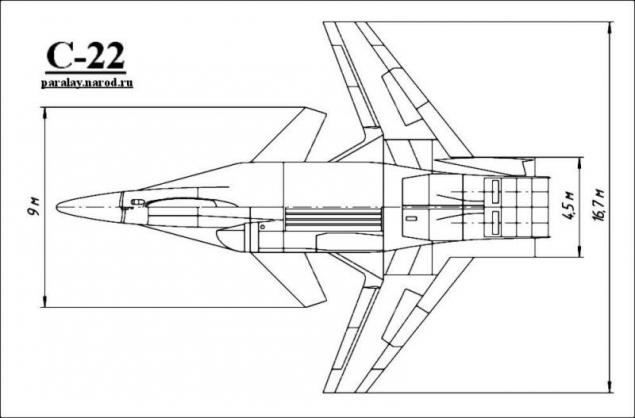
These and other advantages of the WWTP allows creating a new fighter, the characteristics of which would be significantly higher than that of the traditional scheme of machines. But, as always happens, the benefits were accompanied by serious flaws and problems to be solved in the near future. Swept wing has set designers following questions:
- Elastic divergence wing. CBS at certain speeds starts to curl, which could lead to its destruction. The solution has seen an increase of rigidity of the wing;
- The weight of the structure. Sufficiently rigid wing made of the currently available materials produced too heavy;
- Drag. With further increase in the rate of negative sufficiently rigid wing sweep is faced with new challenges. The specific nature of flow around the wing leads to a noticeable increase in drag compared with the characteristics of a wing with sweepback;
- Displacement of the aerodynamic focus. At high speed aircraft with CBS forced to actively implement the longitudinal balance.
Only solution to all these problems directly related to the forward-swept wing, could have a positive effect in the form of the benefits described above. Designers led by MP Simon looked for solutions.
Already in the early stages of the project P-22 identified the main technological solutions, which were later used on the C-37. Wing sufficient rigidity proposed to do with the extensive use of carbon fiber reinforced plastics. The amount of metal parts reduced to the minimum. In addition, the wing was equipped with advanced mechanized flap designed to optimize the flow past at high angles of attack. Look aircraft C-22 was determined by the mid-eighties. It was a single-engine fighter with a wind a "duck." Perhaps by the end of the decade the C-22 would make its first flight, but in the Soviet Union there was no suitable engine. All available aircraft engines did not give the required thrust-weight ratio.
Studies have been conducted to assess whether changes in the project under a new engine from the existing. These works have ended without success: the aircraft still remained too heavy for the available engines. In connection with this, based on the C-22 began to design new plane C-32. Aerodynamic features of the C-32 is almost completely consistent with the previous draft, but was applied new powerplant. Two turbofans RD-79m with a thrust of 18500 kgf could provide sufficient indicators potyazhelevshy car Thrust. Moreover, the calculations showed that these engines were able to provide C-32 long flight at supersonic speeds without using afterburners.
In 1988, in view of the worsening economic situation in the country, the project C-32 was almost closed, but on his behalf command of the Navy. Admirals acquainted with the calculated characteristics of advanced aircraft and demanded to create on its basis of carrier-based fighter. Within a few months KB them. Sukhoi Su-created project 27km. In fact it was significantly modified glider C-32, equipped with equipment and armament of the Su-33. Under the project, the machine had a maximum takeoff weight of 40 tons, using RD-79m is not allowed to take off from aircraft carriers as a springboard, as did the Su-33. To solve this problem has been proposed ballistic takeoff. The essence of this technique is that the lack of speed in isolation from jumping height and offset characteristics of forward-swept wing. Thanks to CBS, losing a few meters in height, the plane could gain the necessary speed and move in horizontal flight. Aircraft with wing sweepback could not use the ballistic rise as insufficient lift and horizontal speed guaranteed would lead to a fall in the water.

Multipurpose carrier-based fighter Su-27km (later C-32), designed in OKB. Sukhoi to equip Soviet aircraft carrier project 1143.5 ("Smith"), 1143.6 ("Varyag") and atomic 1143.7 (head - "Ulyanovsk"). After the collapse of the USSR draft Sioux 27km in the form of creating a combat fighter was discontinued due to coagulation of building aircraft carriers and financial problems, and the topic has been transformed into a research project on the study of "forward-swept wing" (CBS), in which for instance static strength tests were completed prior to experimental aircraft P.37 "Berkut", now known as the Su-47

Project C-37
The deteriorating economic situation in the country has not allowed the Navy to get a perspective carrier-based fighter. Plans KB them. Dry included the construction of several prototypes of the Su-27km, but the cessation of funding is not allowed to do this. In the early nineties, aircraft manufacturers have decided to continue the study on forward-swept wing, using the already existing strengths. Another project was designed to combine all the achievements and solutions adjusted to the financial problems and the state of the aviation industry. The project was called the C-37.
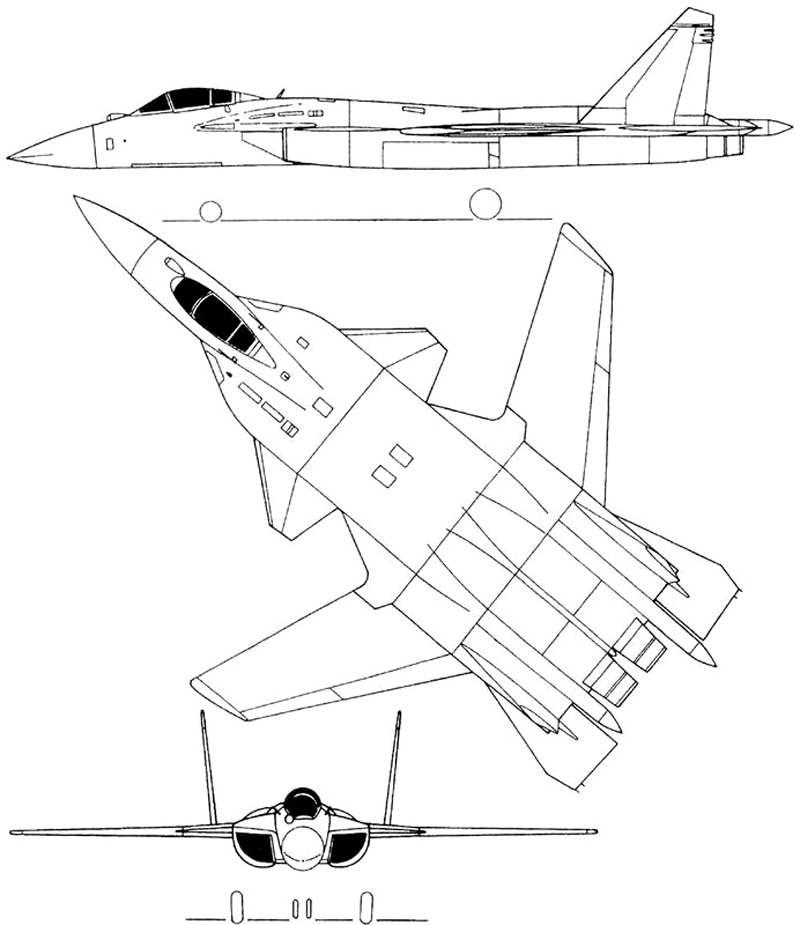
First of all it should be noted that the reduction in funding and the return status of the project impact on the number of proactive planned prototypes. It was decided to build only one prototype. According to some sources, built glider first sent to the static tests, where, using the most modern techniques, to estimate its actual strength. Any failure load is not attached, and all impact equals the target performance. This significantly reduced the cost of the project through the construction of additional airframes. After the static test airframe was first be upgraded to a full state of the aircraft.
Ready experimental aircraft C-37 "Berkut" is interesting for both professionals and the general public. Attention first attracted by technologies to the second - an unusual appearance and claimed capabilities. With the aerodynamic point of view C-37 is an integral longitudinal triplane with a high wing reverse sweep. Front and tail made all-moving horizontal tail and have a relatively small area. According to some, the aerodynamic characteristics of the C-37 allows it to go on the attack angles up to 120 ° C and perform the so-called dynamic braking ("Pugachev Cobra"), but on the tests and demonstrations during this possibility almost never used because of the limitations on flight mode.

One of the main achievements of the Design Bureau. Dry, Irkutsk Aviation Plant and related businesses can be considered as the creation of the production technology of long composite parts. During the production of large shaped flat parts, which then can be given a complicated configuration. Finished parts are joined to each other with high precision. The outer surface of the airframe C-37 consists of a large number of such composite panels, the largest of which has a length of about 8 meters. Due to this the number of joints is minimized and various projecting parts including fasteners. Ultimately, the use of large composite panels as beneficial impact on the rigidity of the wing structure, and the entire aircraft aerodynamics.
Empty weight S-37 was equal to 19,500 kg, of which about 13% were in parts made of composite materials. Given the experimental nature of the project in the design of the aircraft were used not only specially created by new technology elements, but also has mastered in manufacturing and borrowed from other aircraft. For example, the landing gear, flashlight and some of the systems on board almost unchanged were taken from the Su-27.
Forward-swept wing aircraft C-37 has a console with a sweep on the leading edge -20 ° and -37 ° on the rear. At the root of the leading edge forms influx sweepback. Pairing influx and console with forward and reverse sweep has improved the flow around in this part of the airframe. The leading edge of the wing is equipped with a flap, rear - Simplex flaps and ailerons. Mechanization almost completely covers the edge of the wing. In view of the requirements for the structural rigidity of the wing is 90% of the composite parts. The remaining elements are made of metal and used in the power set.

Close to the central part of the fuselage, on the sides of the air intakes, the Su-37 has all-moving canards trapezoidal shape. The tail horizontal tail also holds tselnopovorotnym and has a characteristic elongated shape with a large swept leading edge. Vertical tail looks like keels Su-27, but has a smaller area. At the expense of some of the nuances of the design was able to significantly increase the efficiency of its work, which reduced the area.
The fuselage of the aircraft C-37 has smooth contours, and its cross section is mainly close to the oval. The design of the bow close to the design of appropriate airframe of the Su-27. On either side of the rear of the cockpit placed unregulated air intakes. Their shape is formed by the sector of the circle, the truncation of the fuselage sides and top of the root influx of center. On the upper surface of the middle part of the fuselage near the root of the wing has additional inlets that are used during takeoff and landing, or in intensive maneuvering. As can be seen from the shape of the fuselage, the intake passage towards flex engines, which, inter alia, covers compressor blades and thereby reduces the visibility in the frontal plane of projection. On each side of the engine nozzles on the aircraft C-37 are relatively small fairings inside which can be taken the necessary electronic equipment of appropriate sizes.
Given the absence of other suitable engine, ready for production, to be installed on C-37 were selected turbofan D-30F11. These engines are a further development of the D-30F6 used on the MiG-31. It was assumed that in the future C-37 will be able to get new more advanced engines with greater thrust, lower fuel consumption and thrust vector control system. Turbojet engine with afterburner thrust of 15,600 kgf given plane with normal takeoff weight of about 25, 6 tons of fairly high performance. The stated maximum speed of flight - 2,200 km / h at high altitude and 1400 km / h at the ground. Service ceiling was set at 18,000 meters, the practical range - 3300 km.

On the composition of aircraft equipment C-37 is still not much known. According to reports, the aircraft is equipped with wire control system, created on the basis FBWCS Su-27. Also available inertial navigation system with the possibility of using satellite navigation signals, as well as modern communication systems. On the C-37 to facilitate the work of the pilot was found ejection seat K-36DM different from serial production of this model. Backrest on "Berkut" is at an angle of 30 ° to the horizontal. This helps the pilot to easily move overload arising under intense maneuvering. According to some sources, at S-37 were used for domestic unusual combat aircraft controls, instead of the standard central control knob aircraft was to use a small handle, placed on the right of the dashboard. Handles motor control and pedal at the same time remain the same, similar to those used on the Su-27.
As an experimental aircraft, a prototype C-37 was not carrying any weapons.
